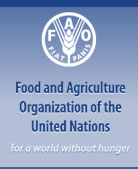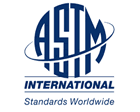 The April World Supply and Demand report out today from USDA lowers ending stocks for corn, but keeps corn use for ethanol the same.
The April World Supply and Demand report out today from USDA lowers ending stocks for corn, but keeps corn use for ethanol the same.
Corn ending stocks were cut by 40 million bushels “as higher expected feed and residual use more than offsets a reduction in food, seed and industrial use.” Food, seed, and industrial use was lowered 10 million bushels but ethanol remained unchanged at 3.7 million bushels.
 However, market analyst Mike Krueger from The Money Farm says that may change next time around. “Ethanol production has been slightly stronger than people expected,” Krueger said during a conference call for the Minneapolis Grain Exchange today. “I think it will depend on how quickly these VeraSun plants get back on line and running. We still have four months or so left in the marketing year for that to happen.”
However, market analyst Mike Krueger from The Money Farm says that may change next time around. “Ethanol production has been slightly stronger than people expected,” Krueger said during a conference call for the Minneapolis Grain Exchange today. “I think it will depend on how quickly these VeraSun plants get back on line and running. We still have four months or so left in the marketing year for that to happen.”
The lower ending stocks for corn means higher projected prices for the year. USDA is now forecasting the 2008/09 season-average farm price for corn will be $4.00 to $4.40 per bushel, up 10 cents on both ends of the range. This compares with the 2007/08 record of $4.20 per bushel.


 Most media reports have focused on the findings in the report,
Most media reports have focused on the findings in the report,  A leading biodiesel company north of the border has teamed up with an American agri-business giant to go in to the green fuel business together.
A leading biodiesel company north of the border has teamed up with an American agri-business giant to go in to the green fuel business together. Biodiesel producers not quite able to pass the newest quality standard… ASTM D 6751, which now includes a Cold Soak Filtration Test (CFST)… will have some extra time when they can still claim the Internal Revenue Service’s dollar-per-gallon tax credit. Those not meeting the new standard were supposed to lose the credit as of April 1st, but that’s been rolled back to October 1st.
Biodiesel producers not quite able to pass the newest quality standard… ASTM D 6751, which now includes a Cold Soak Filtration Test (CFST)… will have some extra time when they can still claim the Internal Revenue Service’s dollar-per-gallon tax credit. Those not meeting the new standard were supposed to lose the credit as of April 1st, but that’s been rolled back to October 1st. Ethanol emergency response training will be offered in eight Missouri and Illinois cities through May 14. This training group is offered by Transporattion Community Awareness and Emergency Response, a partnership of chemical and transportation industries that help communities with hazardous materials transportation and emergency preparedness.
Ethanol emergency response training will be offered in eight Missouri and Illinois cities through May 14. This training group is offered by Transporattion Community Awareness and Emergency Response, a partnership of chemical and transportation industries that help communities with hazardous materials transportation and emergency preparedness.  by
by 
 The new report,
The new report,  An Illinois biodiesel plant has made some upgrades and can now use a wider variety of feedstocks.
An Illinois biodiesel plant has made some upgrades and can now use a wider variety of feedstocks. The new Cold Soak Filtration Test method for B100 biodiesel finally has an official number.
The new Cold Soak Filtration Test method for B100 biodiesel finally has an official number.